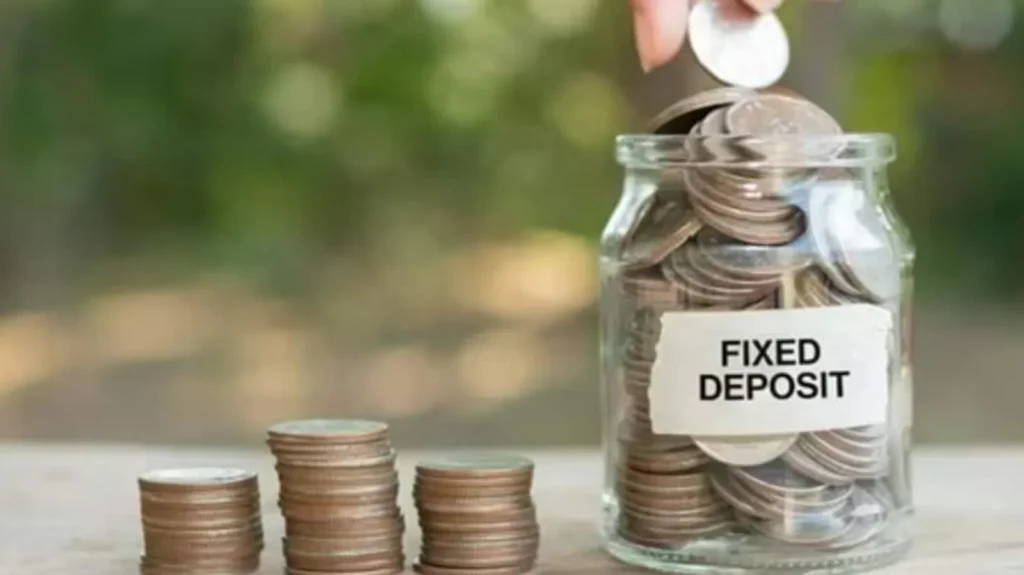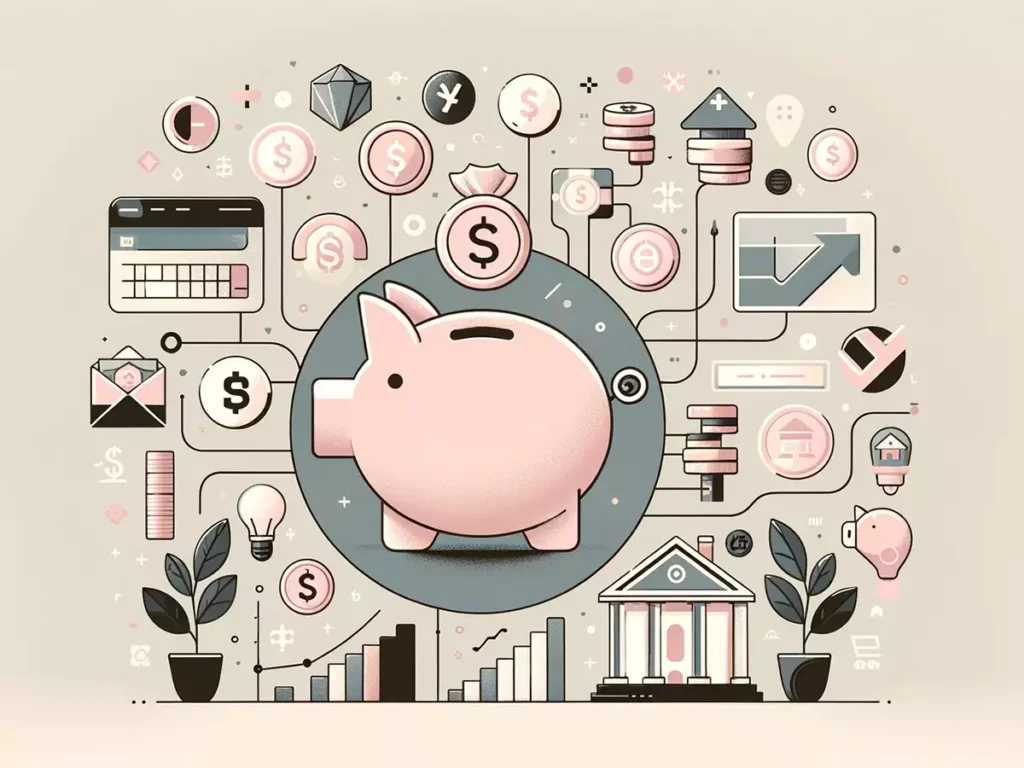Fixed deposits (FDs) are a go-to investment for many people because they’re safe, reliable, and offer guaranteed returns. They’re a comforting choice for anyone looking to grow their savings with minimal risk. But here’s the thing: Most people who invest in FDs aren’t maximizing their potential.
If you think investing in FDs is straightforward (choose a tenure, invest your money, and forget about it), then you might miss out on a simple yet effective strategy to boost your returns while staying flexible with your finances.
There are a few ways to invest smartly in FDs, and fixed deposit laddering is one of them. With Fixed Deposit laddering, you can invest smartly, following an easy approach that optimizes returns, manages risks, and ensures liquidity. Sound interesting?
Let’s break it down to show you how this works and how to use it to level up your investment game. We will also compare the returns by taking real-world examples, so read along.
What Is Fixed Deposit Laddering?

FD laddering is a simple investment strategy. Here, the idea is to divide the investment into smaller chunks, each deposited into FDs with varying tenures. Instead of putting all your money in a single FD for one long tenure, you spread it across multiple shorter-tenure FDs. The primary objective of this approach is to strike a balance between earning steady returns and maintaining access to funds at regular intervals.
Why does this matter?
One of the major benefits of FD laddering is optimization. This means that by splitting your funds, you will have access to your money more frequently, and you also make the most of the higher interest rates that longer-term FDs often provide. It’s a win-win; you enjoy steady returns and better liquidity.
Here’s where laddering becomes your financial multitool. It allows you to minimize the impact of changing interest rates and ensures you always have an FD maturing periodically to meet any urgent cash needs.
Benefits of the Fixed Deposit Laddering Strategy
FD laddering isn’t just clever—it works. Here’s how it helps you maximize your returns and manage risk effectively.
1. Optimize Returns Without Compromising Liquidity
By laddering your FDs, you unlock a balance between high returns and access to funds. Short-term FDs provide liquidity in need, while long-term FDs take advantage of higher interest rates over time.
For example, instead of putting 5,00,000 into one 5-year FD, you could invest 1,00,000 into a 1-year FD, 1,00,000 into a 2-year FD, 1,00,000 into a 3-year FD, and 2,00,000 into a 5-year FD. When the 1-year FD matures, you can either use the funds or reinvest them into another long-term FD.
Now, you may ask why not invest the complete amount in a 5-year FD. Well, the benefit of laddering is that you get to reinvest every time your FD matures. For example, once your 1st FD matures, you can reinvest it for 2 years. Once your 2nd FD matures, you can reinvest it for 3 years, and so on. The overall returns would be quite higher compared to a one-time investment.
2. Reduce Interest Rate Risk

Interest rates fluctuate over time, and investing all your money into a single FD locks you into the prevailing rate at the time of deposit. However, by laddering your investments, you’re not overexposed to a single rate. When rates go up, you can reinvest maturing FDs at higher rates. If rates drop, at least part of your portfolio continues to earn a higher return from FDs invested earlier.
3. Steady Cash Flow
Laddering ensures that you always have an FD maturing at regular intervals. This can be incredibly useful for meeting planned expenses like funding a vacation, paying insurance premiums, or covering education costs, or for emergencies that demand quick access to cash.
4. Mitigate Risk with Diversification
Keeping all your eggs in one basket doesn’t count as smart investing. Spreading your FDs across multiple tenures reduces risk and provides a sense of stability, especially during economic fluctuations.
How to Build Your FD Ladder
It’s easier than you think to get started with FD laddering. Just follow these six steps to create a powerful investment strategy tailored to your needs.
Step 1: Define Your Financial Goals

Before you start, clarify your goals. Are you planning to use the returns for retirement, children’s education, or emergencies? Understanding your objectives will help you determine how many FDs you’ll need and what their tenures should be.
Step 2: Assess Your Funds
Divide the amount you want to invest. Look at how much you’re comfortable locking away for longer tenures versus how much you’d like to stay easily accessible for short-term needs.
Step 3: Choose Different Tenures
Pick a mix of FD tenures—such as 1 year, 2 years, 3 years, and 5 years. This will allow you to reap the benefits of both short- and long-term investments.
For example, assume you want to invest $5,00,000. Instead of placing the entire amount in a single 5-year FD, you could divide it as follows:
- 1,00,000 in a 1-year FD
- 2,00,000 in a 18-month FD
- 3,00,000 in a 2-year FD
| Number of FDs | Invested amount | Rate of interest | Return | Total |
| 1st FD (for 1y) | 1,00,000 | 6.70% | 6,700 | 1,06,700 |
| 2nd FD (for 2y) | 2,00,000 | 7.25% | 30,908 | 2,30,908 |
| 3rd FD (for 3y) | 2,00,000 | 7.00% | 46,288 | 2,56,288 |
| Total | 5,93,896 | |||
| Vs | ||||
| Investing 5,00,000 as lumpsum for 3 years (interest payment is done on maturity) | 5,00,000 | 7.00% | 1,15,720 | 6,15,720 |
| Investing 5,00,000 as lumpsum for 3 years (interest payment is done on quarterly basis) | 5,00,000 | 7.00% | 1,05,000 | 6,05,000 |
In the above case, we have taken ICICI Bank FD interest rates for reference. Here, the FD is for a person below 60 age and the interest payment is made on maturity. Though you may notice initially the difference between interest earned on lump sum investing and in laddering mode, laddering provides better liquidity and mitigates risk.
The amount invested through laddering will start maturing just after one year while one done via lump sum is locked for 3 years.
If in those 3 years, you happen to need cash, you might have to break your FD prematurely. If so, the bank will apply a premature withdrawal penalty, significantly reducing your return, while in laddering, you will never have a liquidity crisis. Also, in case of any interest rate fluctuations, you will be protected with laddering as you will have FDs maturing every other year, giving you the option to update your investment to a higher return.
In Fixed Deposit laddering, when your investment matures after 1 year, you can partly or fully use it or reinvest it for another tenure. For example, an FD matures after 1 year, and the holder has the option to either use the interest amount or partially or fully use the FD according to planned goals.
He can also reinvest the amount for the highest tenure in the ladder (in the above example, 3 years), so he will have an FD maturing every year. This way creates a ladder for the holders to climb the steps and reach their goals.
Step 4: Compare Interest Rates
Before locking in your FDs, compare interest rates offered by different banks or financial institutions like NBFCs. Higher rates can significantly impact your overall returns. Consider using FD calculators to estimate your earnings and pick the best option. With FD’s interest rates, proper research should also be done on the credibility of banks/ financial institutions to have a sense of security in the mind.
Step 5: Automate Renewals or Realign Investments
When an FD matures, decide whether to reinvest it for a longer term or use it for immediate needs. If interest rates are favorable, you can extend the ladder by rolling over the matured FD into another long-term deposit, as explained above.
Step 6: Track Your Plan
Keep an eye on your laddered FDs. Review them periodically to make sure they’re aligned with your evolving financial goals and market conditions.
Who Should Consider FD Laddering?

FD laddering isn’t just for seasoned finance enthusiasts. It’s a flexible strategy suitable for anyone looking to earn steady returns with less risk.
Here’s who can benefit most from FD laddering:
- First-time investors seeking peace of mind
- Retirees looking for periodic income
- Individuals saving for specific goals (like weddings, home purchases, or education)
- Those who prefer low-risk investments to diversify their portfolio
Pro Tips to Maximize Your Fixed Deposit Laddering Strategy
- Research Trends: Keep up with market trends and interest rates. Timing is everything when deciding to lock in your FDs at a favorable rate.
- Diversify Banks: Consider spreading your FDs across multiple banks to take advantage of different rates and benefits (and stay within deposit insurance limits).
- Plan Exit Options: If you need funds unexpectedly, check your FD’s premature withdrawal penalties. Some banks offer flexible options without high fees.
Conclusion
FD laddering is a game-changer for anyone looking to get more value from their fixed deposit investments. Not only does it help you earn good returns, but it also provides the liquidity and flexibility needed to meet life’s financial demands. Whether you’re new to FDs or a seasoned investor, this strategy is worth exploring. Take charge of your finances, minimize risk, and watch your wealth grow—one smart step at a time.
Want to learn more? Share your thoughts or questions in the comments below!
